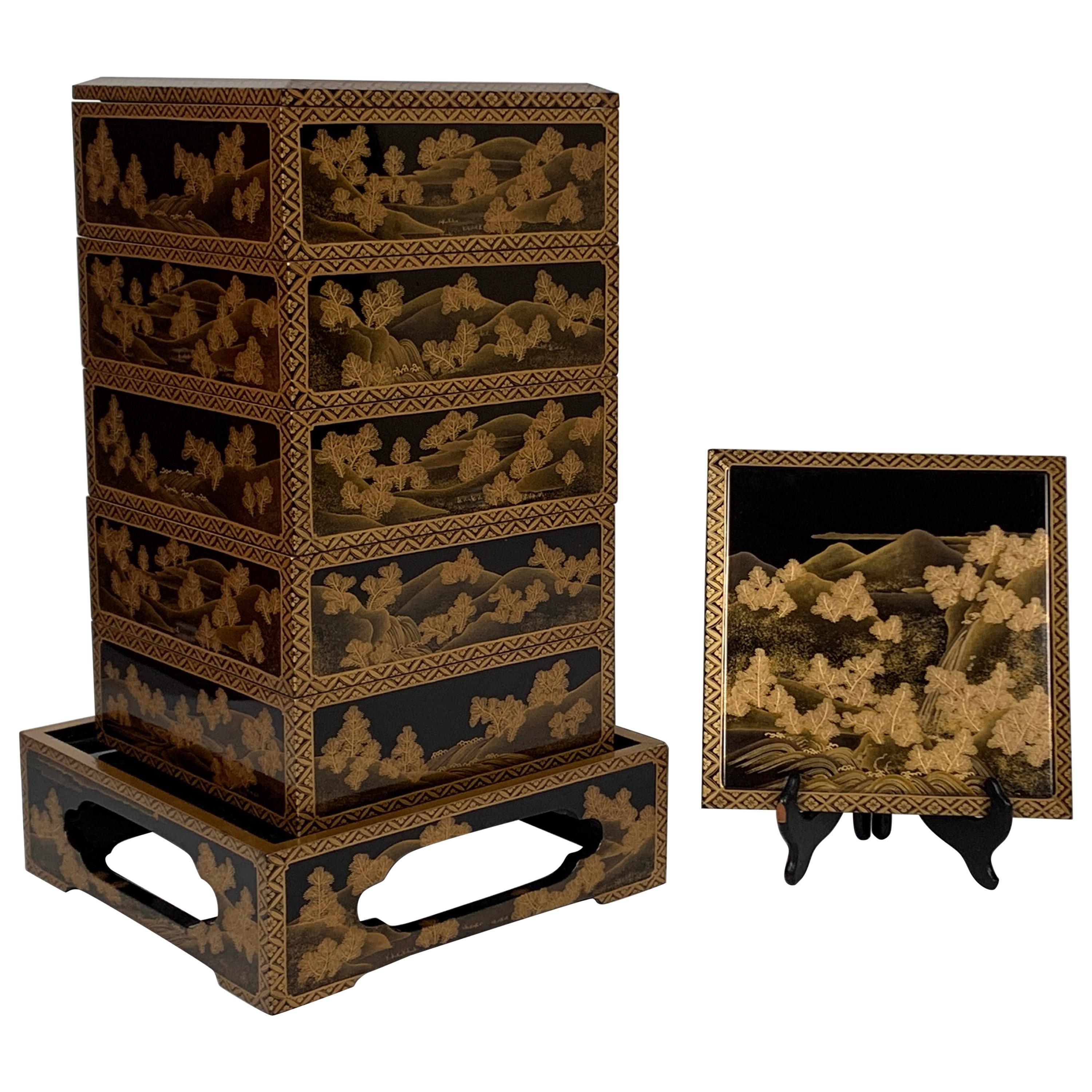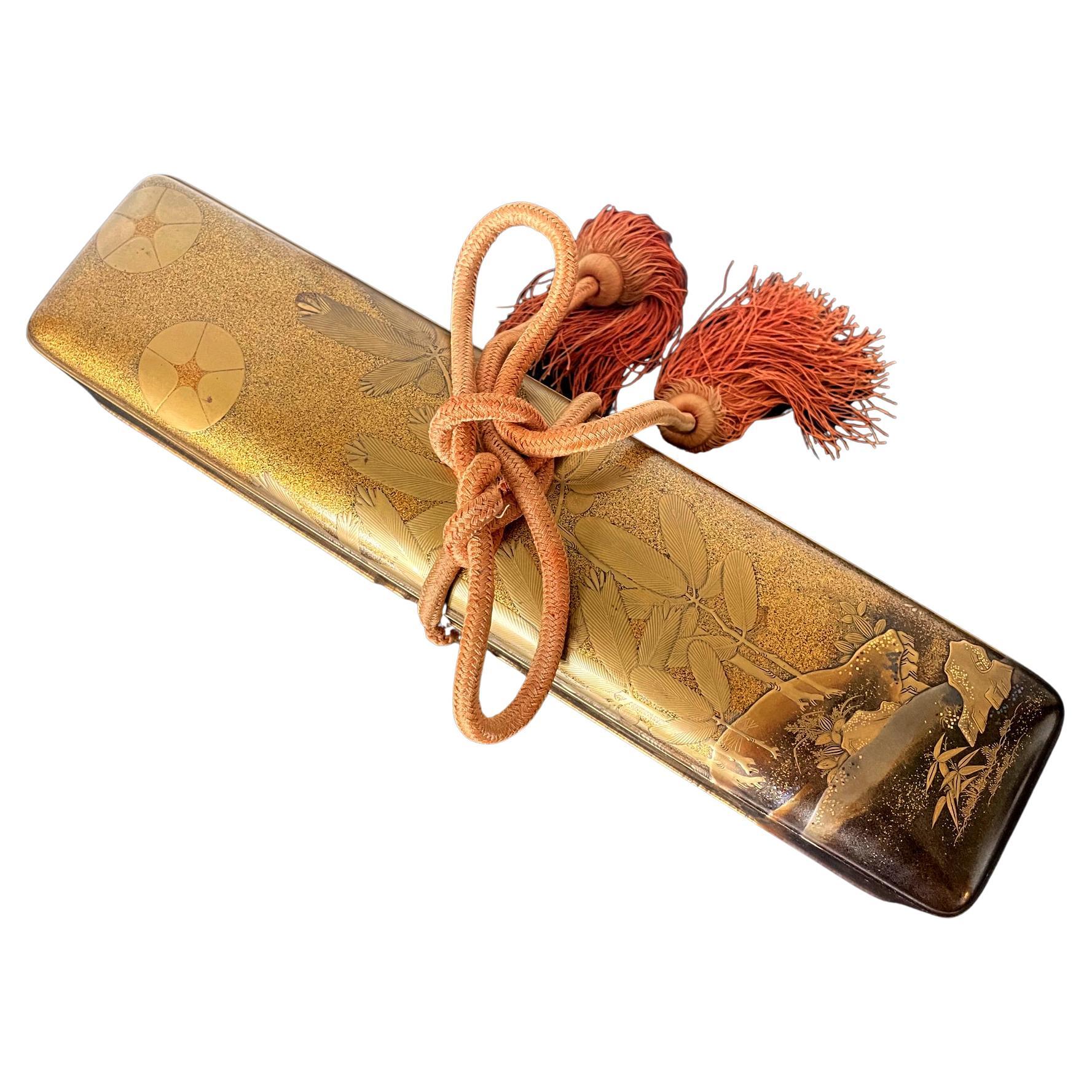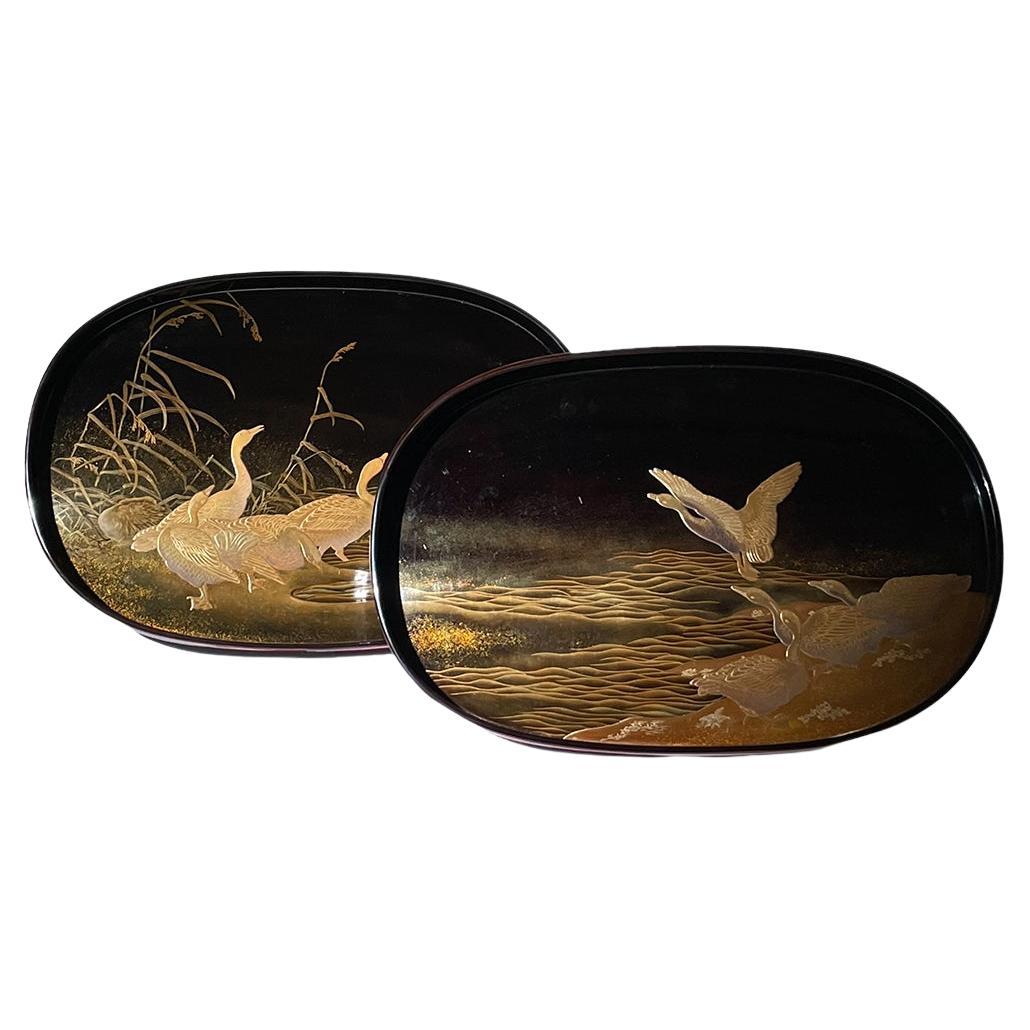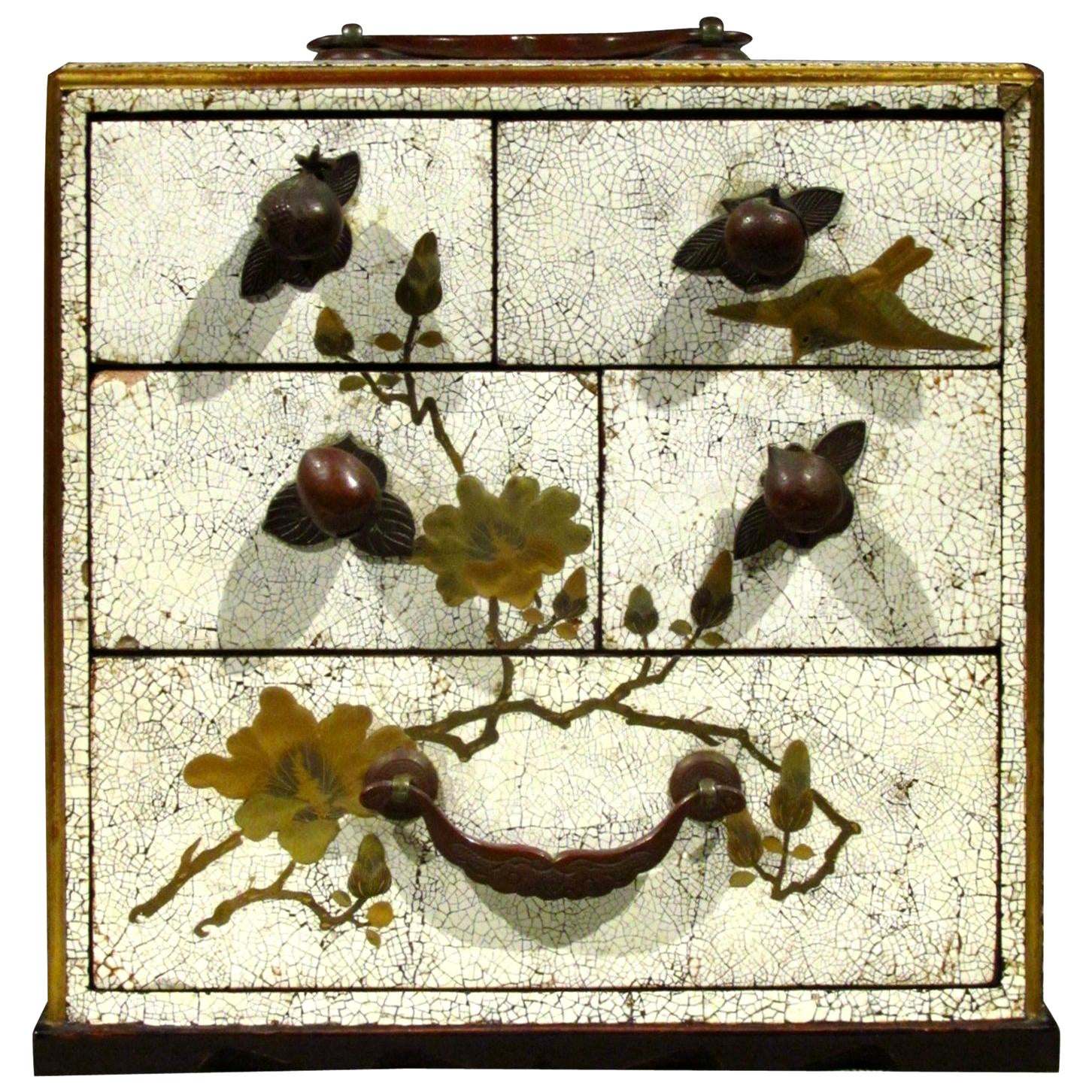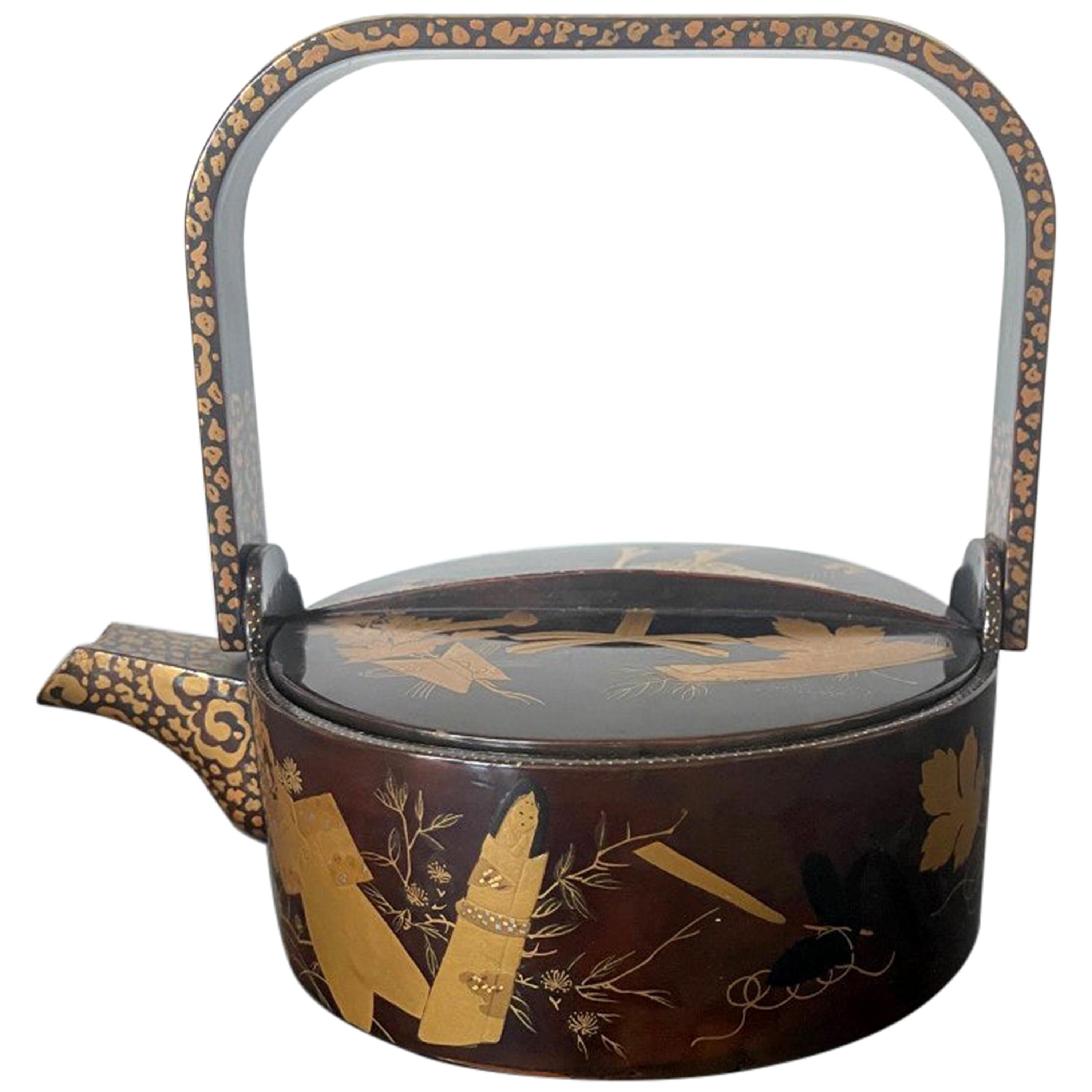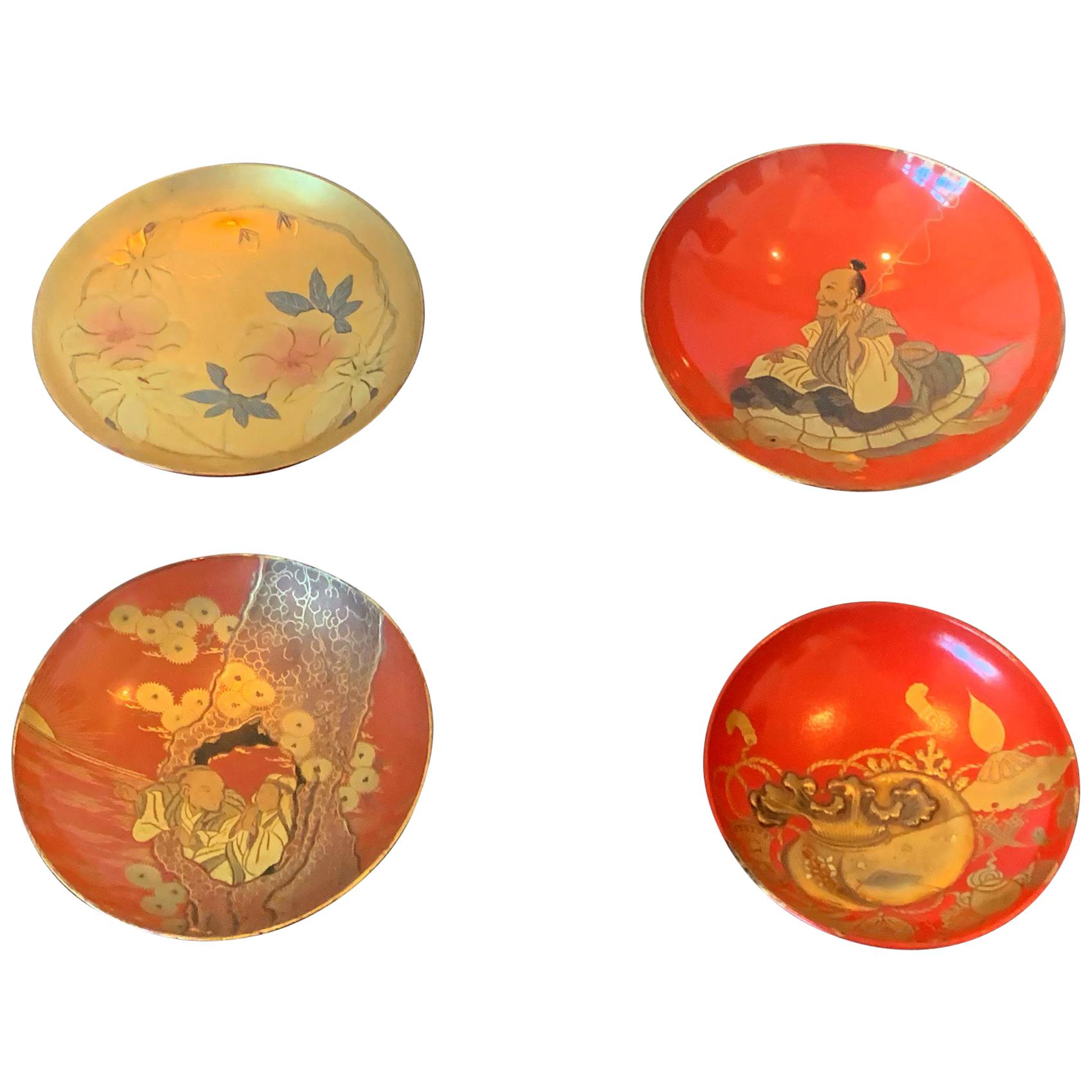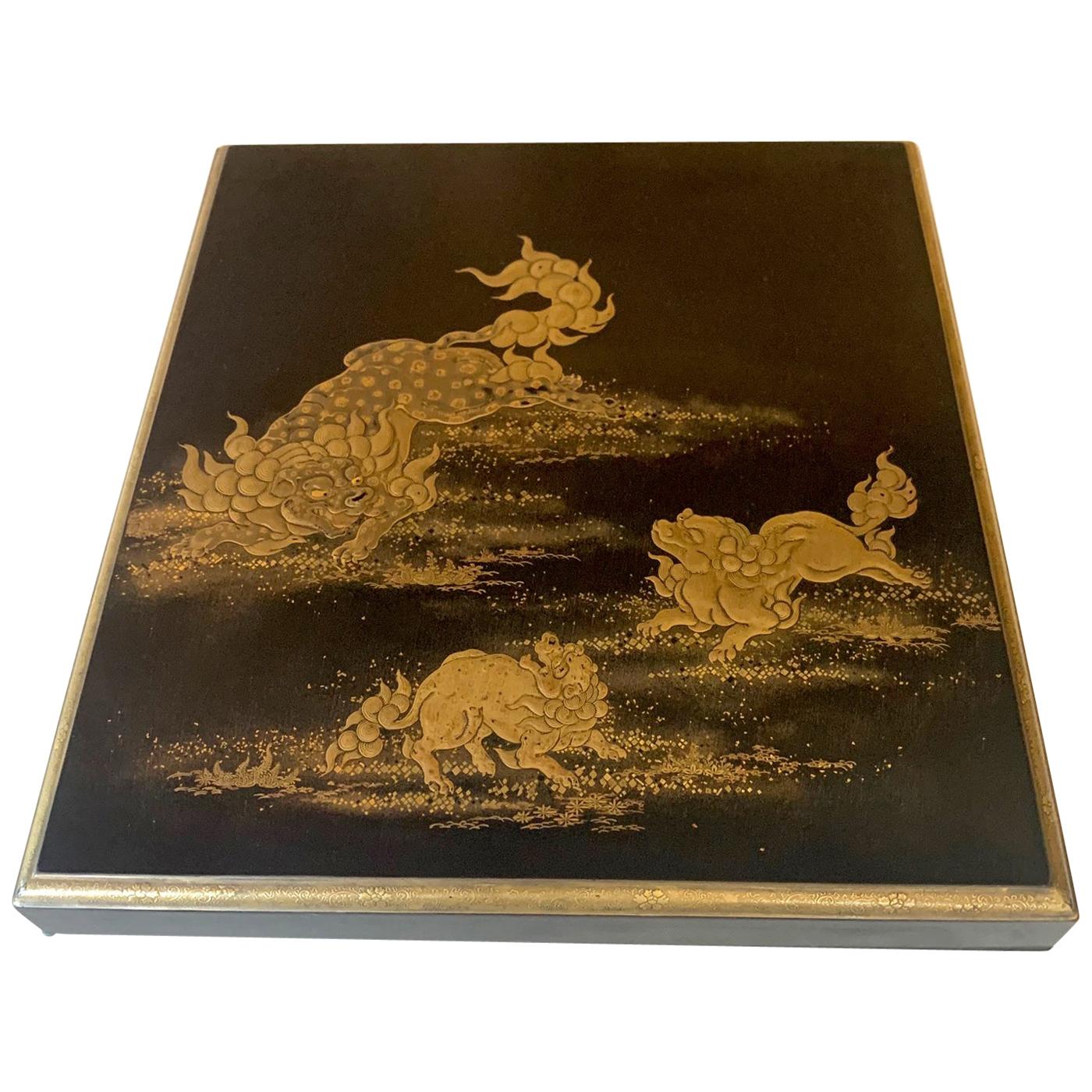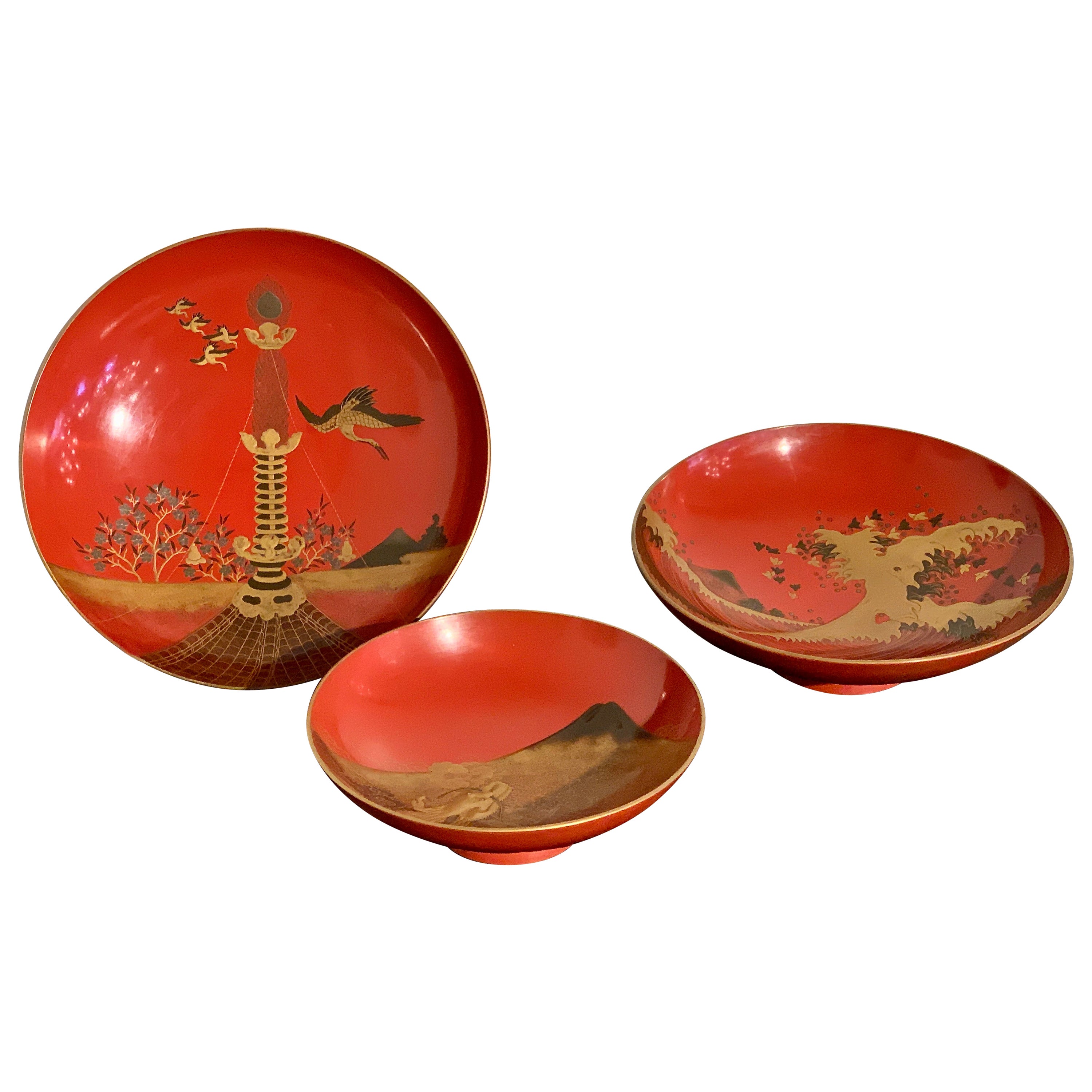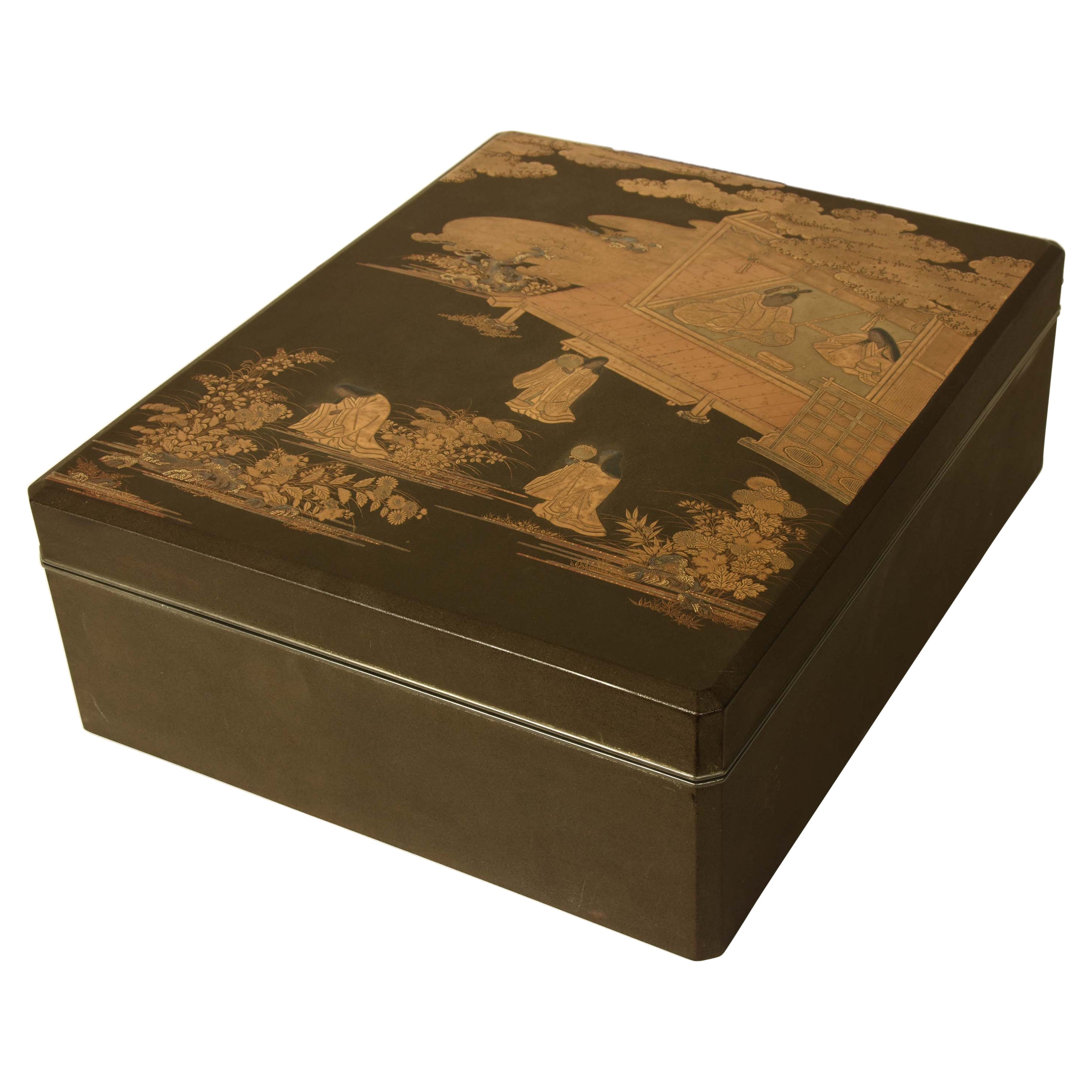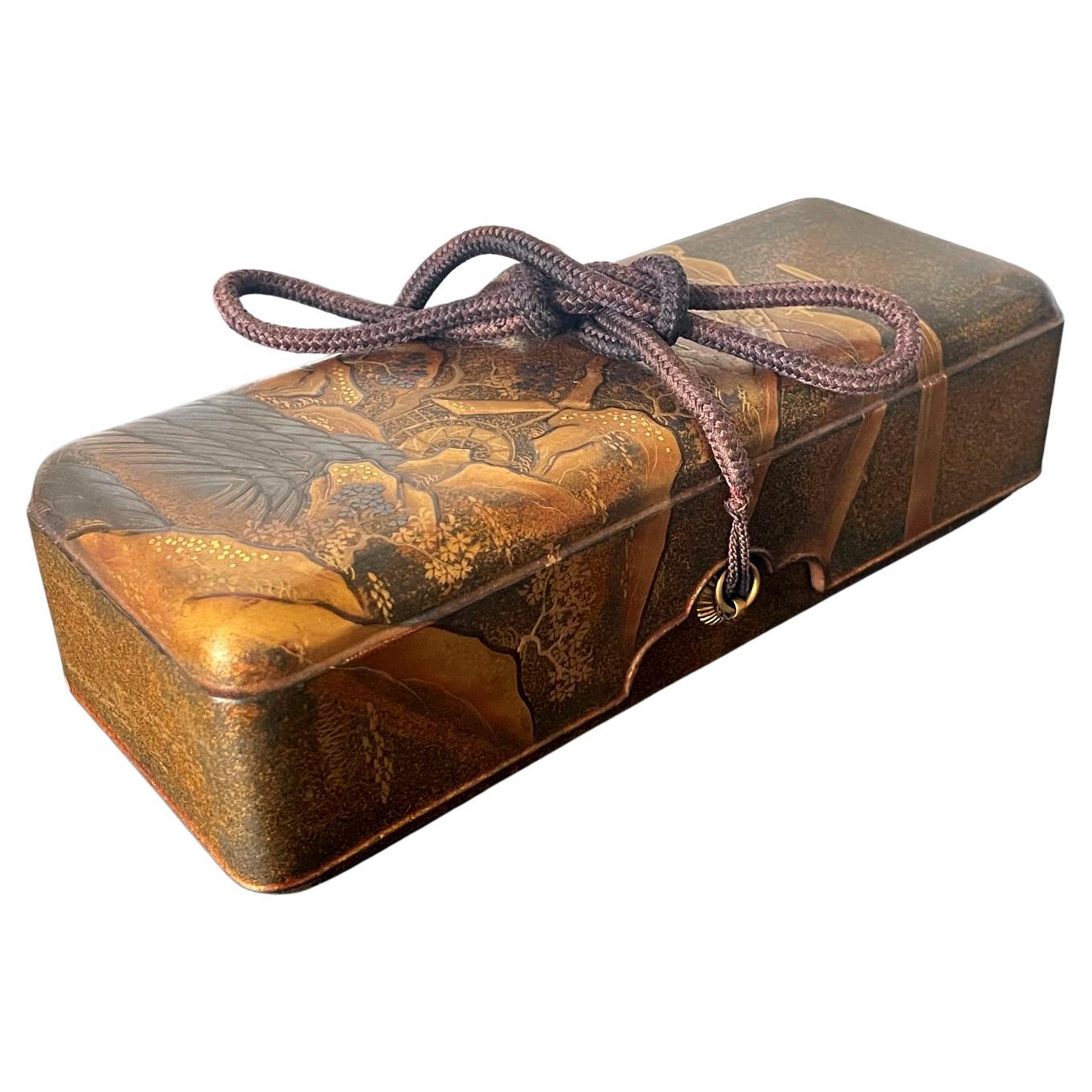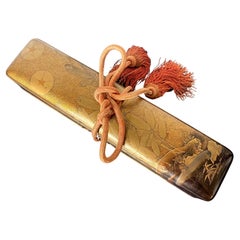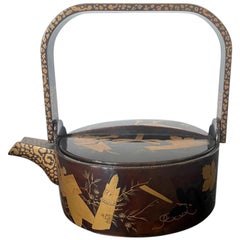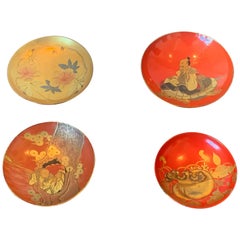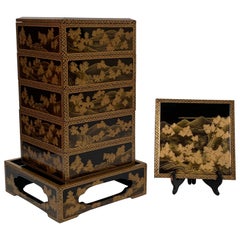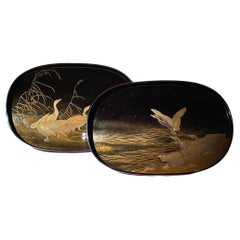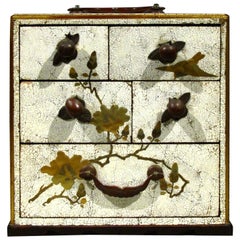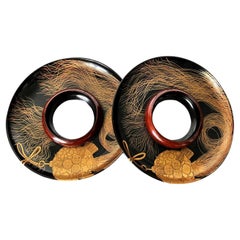
Pair of Japanese Lacquer Maki-e Cup Stand Meiji Period
View Similar Items
Want more images or videos?
Request additional images or videos from the seller
1 of 11
Pair of Japanese Lacquer Maki-e Cup Stand Meiji Period
About the Item
- Dimensions:Height: 1.75 in (4.45 cm)Diameter: 5.75 in (14.61 cm)
- Sold As:Set of 2
- Style:Meiji (Of the Period)
- Materials and Techniques:
- Place of Origin:
- Period:
- Date of Manufacture:1890s-1900s
- Condition:Wear consistent with age and use. Stands are in fine condition with minimal wear. Box is in worn condition as shown.
- Seller Location:Atlanta, GA
- Reference Number:1stDibs: LU945031244102
About the Seller
5.0
Platinum Seller
These expertly vetted sellers are 1stDibs' most experienced sellers and are rated highest by our customers.
Established in 2006
1stDibs seller since 2010
480 sales on 1stDibs
More From This SellerView All
- Japanese Lacquered Gold Maki-E Naga Fubako Meiji PeriodLocated in Atlanta, GAA Japanese lacquered wood Naga Fubako (a long box used to store document or large scroll painting), circa 19th century Meiji period. The rectangular box features an unusually deep lipped lid with slightly rounded corners, a conforming lower box with bronze medallion rings with tasseled...Category
Antique 19th Century Japanese Meiji Lacquer
MaterialsWood, Lacquer
- Japanese Lacquer Maki-e Sake Ewer Meiji PeriodLocated in Atlanta, GAA Japanese lacquered wood sake ewer with maki-e design, circa late 19th century, Meiji period. The nicely decorated lacquerware is of a Classic sake ewer for...Category
Antique 1890s Japanese Japonisme Lacquer
MaterialsLacquer
- Four Japanese Lacquered Sake Cups Meiji PeriodLocated in Atlanta, GAAn assemble of four lacquerware sake cups from Meiji period Japan circa late 19th century. The shadow cups on an elevated stem were used by the nobles during ...Category
Antique Late 19th Century Japanese Meiji Lacquer
MaterialsWood, Lacquer
$2,000 / set - Japanese Lacquer Box with Fine Maki-e Decoration Meiji PeriodLocated in Atlanta, GAA lacquered wood box with lid from Japan circa 19th century Meiji Period. The finely decorated box was used to store paper slips and small documents on the desk. It is overall finished with black lacquer (kuro) with sparse Mura-Nashiji effect outside and on the top surface of the lid, there are three Komainu, (sometimes known as Shishi or Japanese lions) frolicking and forming a circle in lively motion. Komainu are auspicious animals in Japanese cultures in both Shinto and Buddhism tradition. Originally from China, these animals symbolizes guardians to ward off evil spirits. Hiramaki-e was used in combination with carving and combing to render the lions with various surface textures. A gilt border with an slight angle was given to the lid and even the thin band is decorated with miniature floral scrolls. The interior of the box was finished in a dense nashiji. Underneath the lid, a cluster of peonies open lavishly by two gentle mounts. Takamaki-e (high relief) in both gold and silver were...Category
Antique Late 19th Century Japanese Japonisme Lacquer
MaterialsWood, Lacquer
- Large Japanese Lacquer Tray with Maki-e Carp Design Meiji PeriodLocated in Atlanta, GAA large rectangular tray with scalloped corners and slightly raised gallery rim circa late 19th century to early 20th century (end of Meiji period). The center image showcases a live...Category
Early 20th Century Japanese Japonisme Lacquer
MaterialsLacquer
- Japanese Lacquered Maki-e Fubako Edo PeriodLocated in Atlanta, GAA Japanese lacquered wood fubako (a box used to store document or small scroll painting), circa second half of 19th century late Edo period. The rectangular box features an unusually deep lipped lid with slightly rounded corners, a conforming lower box that is almost entirely covered by the lid which has two bronze medallion rings with tasseled...Category
Antique 19th Century Japanese Edo Lacquer
MaterialsWood, Lacquer
You May Also Like
- Japanese Maki-e Lacquer Stacking Box, Jubako, Meiji Period, JapanLocated in Austin, TXA fine and impressive Japanese gold maki-e decorated black lacquer five-tier jubako with presentation tray, two lids, and the original tomobako storage box, Meiji period, late 19th c...Category
Antique Late 19th Century Japanese Meiji Lacquer
MaterialsLacquer
- Pair of Two Japanese Antique Maki-e Lacquer Round Trays, Meiji periodLocated in Chuo-ku, TokyoJapanese lacquer tray with the wild goose, reed, and wave design. This pair of tray is a fine example of multiple lacquer techniques using gold, hiramaki-e, takamaki-e, and togidashi...Category
Antique 19th Century Japanese Meiji Lacquer
MaterialsWood, Lacquer
- Signed Japanese White Lacquer and Maki-E Lacquer Tansu, Meiji PeriodLocated in Ottawa, OntarioThe case decorated overall in crackle-glaze white lacquer and fitted with a patinated metal carrying handle over three tiers of small drawers. The first two tiers are comprised of a ...Category
Antique Late 19th Century Japanese Meiji Lacquer
MaterialsLacquer
- Japanese Meiji Period Antique Lacquer Box with Gold Maki-e DecorationLocated in New York, NYA fine antique Japanese Meji Period lacquer box decorated with a fan and a stylized star shaped window in the maki-e technique. The fan at the top right corner, fully opened depictin...Category
Antique 19th Century Japanese Meiji Lacquer
MaterialsLacquer
- Japanese Lacquer Sake Cups, Set of 3, Meiji Period, Early 20th Century, JapanLocated in Austin, TXA finely decorated set of 3 red lacquer sake cups, sakazuki, featuring views of Mt. Fuji, Meiji period, circa 1900, Japan. The lacquer sake cups, called sakazuki, of traditional p...Category
Antique Early 1900s Japanese Meiji Lacquer
MaterialsLacquer
- Japanese Black Lacquer Document Box with Gold Maki e Design, Meiji PeriodLocated in Prahran, VictoriaAn antique black lacquer document box with an exquisitely detailed, finely wrought design from The Tale of the Genji depicted in gold maki e across the lid. Internally, the box is de...Category
Early 20th Century Japanese Lacquer
MaterialsWood, Lacquer
$5,200 Sale Price20% Off
